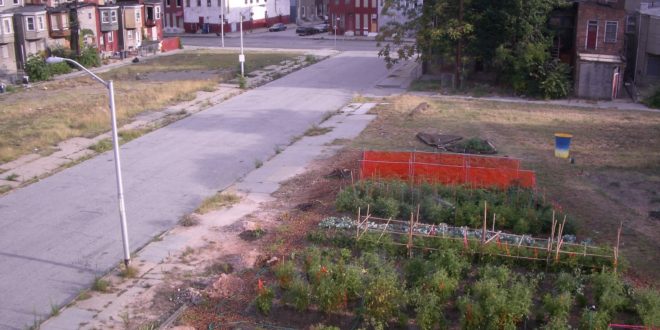Podcast: Play in new window | Download (Duration: 58:04 — 35.6MB)
Blue dots in a sea of red. The electoral map presents a distorted picture belying where most of the country’s population lives, and where the most privation occurs. A survey of the landscape in the wake of Donald Trump’s election reveals that America’s urban/rural drift has cemented into a chasm.
Though commonly conflated with only economic elites, those blue dots contain within them more divisions and real socio-economic hardship — cities abused or ignored by governments at all levels, often including the suburbs directly surrounding them.
SEGMENT ONE
While “red” America took to Trump’s occasional rants against a “rigged economy”, author Bill Goldsmith illustrates the ways in which cities have been hemmed in by unfair policies, emaciated by budget cuts, and so disparaged and stigmatized that the word “urban,” simply meaning “city life,” began in the 1950s to assume a racist cast. He argues that to “make america great again” is to make cities — where most Americans actually live — healthy again.
SEGMENT TWO
We look at some specific school, fiscal, and tax policies as avenues for abuse by state, federal and suburban governments. And the ways in which politicians moralize their actions by painting cities as irredeemable problems responsible for their own mistreatment. Taking center stage is Detroit, crumbling to ruin under 3 decades of economic hostility from the state of Michigan.
SEGMENT THREE
We continue our discussion of how America tightened the noose around cities through policies built on inequality, especially regarding schools. Goldsmith leads us through the gloom to a few hopeful examples of reform, and the concept of the “Brandeis Tipping Point,” which is where a real reform movement could – maybe – begin.
 GUEST
GUEST
Bill Goldsmith is Professor Emeritus of City and Regional Planning at Cornell University. He is coauthor of Separate Societies: Poverty and Inequality in U.S. Cities.
MUSIC
“Inner City Blues” by Marvin Gaye
“My City Was Gone” by The Pretenders
“Detroit, Lift Up Your Weary Head!” by Sufjan Stevens
“Living for the City” by Stevie Wonder
 NEXT UP
NEXT UP
The Wages of Whiteness: W. E. B. Du Bois and the Color Line
Du Bois used the phrase “wages of whiteness” in his 1935 masterpiece of sociology, Black Reconstruction, to describe the bad deal made between the Southern Plantocracy and white workers–social benefits and political access–in exchange for allegiance to the white ruling class in the aftermath of the US Civil War and official Emancipation. He reminds us that for a brief moment in the sun, African-Americans began their climb to freedom, only to be pushed back by the forces of capitalism and racism toward slavery. Bill Mullen, Professor of English and American Studies at Purdue University, joins us to talk about this extraordinarily prolific Revolutionary Across the Color Line, W. E. B. Du Bois.
CREDITS
Producer & Host: Doug Storm
Assistant Producer & Editor: Rob Schoon
Board Engineer: Jennifer Brooks
Executive Producer: Joe Crawford
 WFHB Bloomington Community Radio
WFHB Bloomington Community Radio


